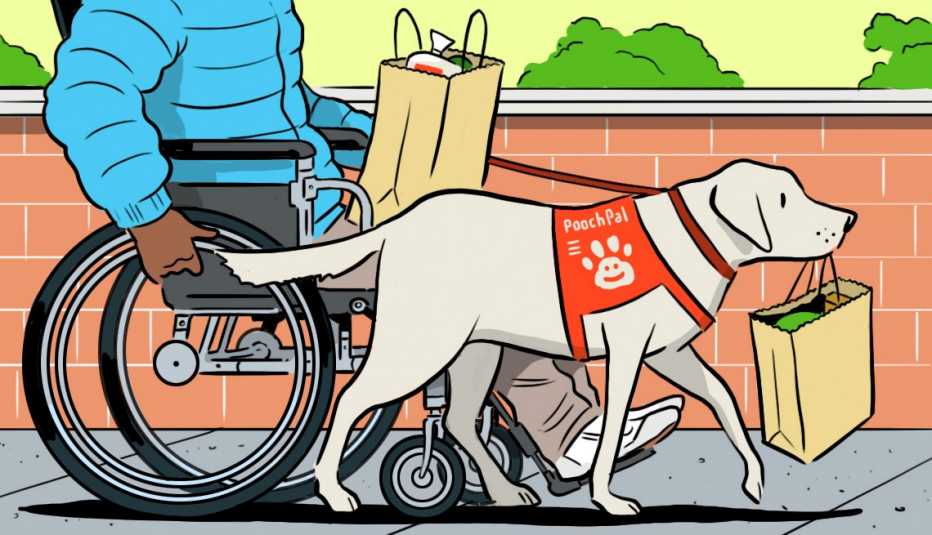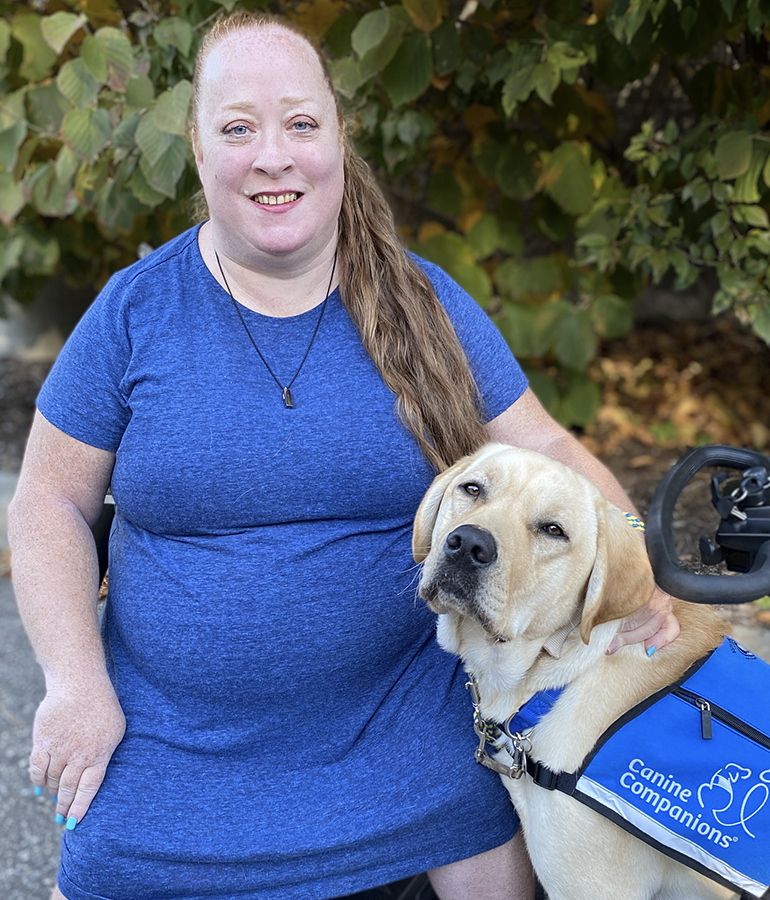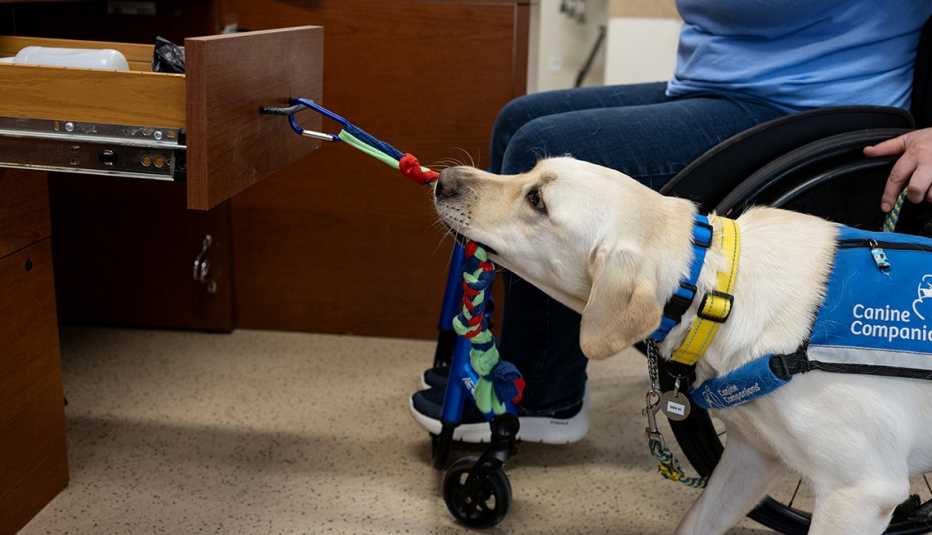Staying Fit


Malfoy doesn’t have an ordinary dog’s life: The 4-year-old fluffy yellow Labrador retriever was bred and trained for the selfless job of assisting a person who needs him. He can open doors, carry shopping bags, pick items off the floor and handle a credit card at the cash register.
He performs these tasks to help 51-year-old Annmarie Snow-Matera of New York City, who has a mobility disability and uses a scooter to get around. For years, she lived with her mother and relied on a home attendant for help with everyday tasks.


Every time Snow-Matera’s mother would hear the slightest noise from Annmarie’s floor in their two-family home, she’d rush to her daughter’s side in a panic thinking that she’d fallen and injured herself. The worries and anxiety were a constant presence in her mother’s mind, says Snow-Matera.
That all changed in 2012 when Snow-Matera got Domino from Canine Companions, a nonprofit organization in Medford, New York, that trains and provides service dogs for people with disabilities. She received her successor dog, Malfoy, from Canine Companions two years ago, and describes her experience with these dogs as “life-changing.”
Though Snow-Matera still receives help from a home attendant five days a week for tasks such as bathing and cooking, she now lives alone with Malfoy who is trained to bark and alert others in times of emergency. The arrangement gives Snow-Matera’s mother and home attendant peace of mind. “It gives the caregiver a lot of relief when you don’t have to call on somebody all the time,” says Snow-Matera.
More service dogs in action
If you think you’re seeing more service dogs like Malfoy in public these days, you’re not wrong. The American Kennel Club estimates there are tens of thousands of service dogs nationwide, and that number has been growing as dogs are trained to cater to a growing range of human needs.
“We often think of them as being guide dogs or hearing-assistance dogs, but we’ve come to realize that they can do so much more for individuals with a wide range of disabilities,” says Sheila Goffe, vice president of government relations of the American Kennel Club.
Some dogs have been trained to sniff out — literally — an impending medical issue in their handler, such as low blood sugar or an oncoming seizure. Other dogs can help people with post-traumatic stress disorder or traumatic brain injury by interrupting nightmares or reminding them when it’s time to take medication.



































































You Might Also Like
Save Your Own Life When Home Alone
From what to do if you have chest pains to what you shouldn’t do if there’s a gas leak, we have tips
Keeping Your Memory Sharp
From checking hormone levels to how to nourish the brain, our AARP Smart Guide has tips to help your head health
Health Risks for People 50 and Older
From cancer to physical injuries and more, we have a look at the top killers — and how to dodge them
More Members Only Access
Enjoy special content just for AARP members, including full-length films and books, AARP Smart Guides, celebrity Q&As, quizzes, tutorials and classes
Recommended for You